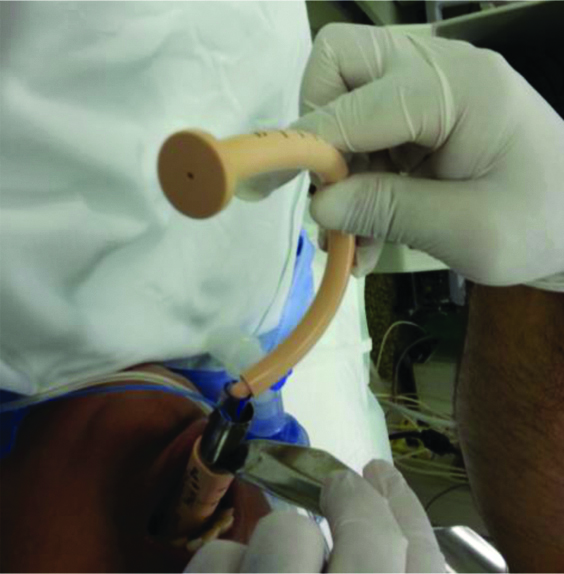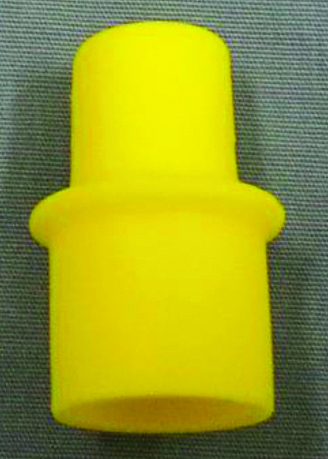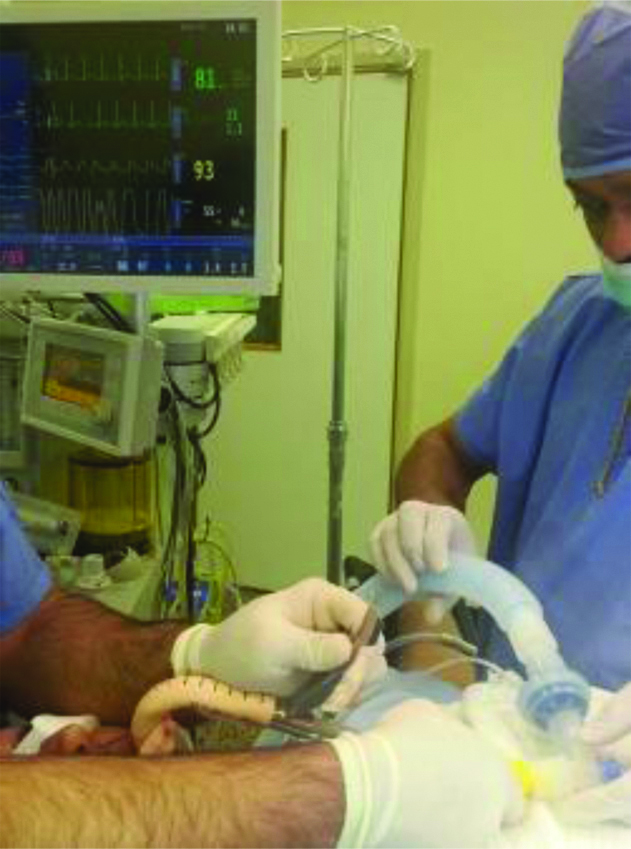Airway Management in Hypoxemic Patient using Modified Intubating Laryngeal Mask Airway Technique
Mohd Mustahsin1, Garima Singh2
1 Consultant, Department of Anaesthesia and Intensive Care, ELMCH, Lucknow, Uttar Pradesh, India.
2 Consultant, Department of Anaesthesia and Intensive Care, ELMCH, Lucknow, Uttar Pradesh, India.
NAME, ADDRESS, E-MAIL ID OF THE CORRESPONDING AUTHOR: Dr. Mohd Mustahsin, FFF2, Doctor’s Residence, Era Medical College, Lucknow, Uttar Pradesh, India.
E-mail: mustahsin.malik@gmail.com
Polyvinylchloride tubes,Tracheal tube,Tube migration
Dear Editor,
The Intubating Laryngeal Mask Airway (ILMA) is useful to facilitate blind oral tracheal intubation [1]. Both the recommended silicon wire reinforced tubes and the less expensive conventional Polyvinylchloride (PVC) tubes have been used with ILMA with comparable success rates [2]. After tracheal intubation, the ILMA is removed over the stabiliser rod engaged into the proximal end of the Tracheal Tube (TT). The 20 cm stabiliser rod that is supplied with the ILMA does not fit properly in the conventional PVC tube [Table/Fig-1] and hence it is prone to disconnection and tube migration while removing the ILMA. The ventilation of the patient is also compromised during ILMA removal which can be dangerous in hypoxemic and critically ill patients. Previous attempts of using smaller TT as an alternative to stabiliser rod have similar difficulties during ILMA removal [3].
Difficulty in ILMA removal using tube stabiliser supplied with ILMA.

To overcome this problem the authors used the Fogarty Catheter Case (FCC) (Edward Life Sciences) trimmed to a length of 20 cm. The cut end of the FCC fits into the proximal end of the 7.5 mm PVC TT. To stabilise a smaller TT, the distal cut end of a 5.5 mm Portex connector can be introduced into the distal end of the FCC. The modified FCC is used in the same way as the standard stabiliser rod to assist in the removal of the ILMA. In addition to this one can connect proximal end of stabilising rod by using 22 mm/15 mm connector (IntersurgicalR) [Table/Fig-2] and the patient can be ventilated even during the removal of ILMA [Table/Fig-3]. The continuous ventilation and monitoring of end tidal carbon dioxide can also detect the tube migration into oesophagus immediately which is another advantage of the stabilising rod over conventional stabilising rod. The authors have successfully used this device in many hypoxemic patients requiring intubation and mechanical ventilation.
IntersurgicalR connector to connect ventilator circuit.

ILMA removal while continuous ventilation (uninterrupted End tidal CO2 trace) using modified stabiliser rod.

[1]. Brain AI, Verghese C, Addy EV, Kaplia A, The intubating laryngeal mask. I. Development of a new device for intubation of the trachea Br J Anaesth 1997 79:699-703.10.1093/bja/79.6.6999496198 [Google Scholar] [CrossRef] [PubMed]
[2]. Kundra P, Sujata N, Ravishankar M, Conventional tracheal tubes for intubation through the intubating laryngeal mask airway Anesth Analg 2005 100:284-88.10.1213/01.ANE.0000139348.00435.3315616092 [Google Scholar] [CrossRef] [PubMed]
[3]. Korula G, Ramamani M, Rivaraj R, Bhaskar S, Intubating laryngeal mask airway-fastrach: An alternative to the stabilising rod Anesth Analg 2007 105:151810.1213/01.ane.0000286133.11031.c617960004 [Google Scholar] [CrossRef] [PubMed]